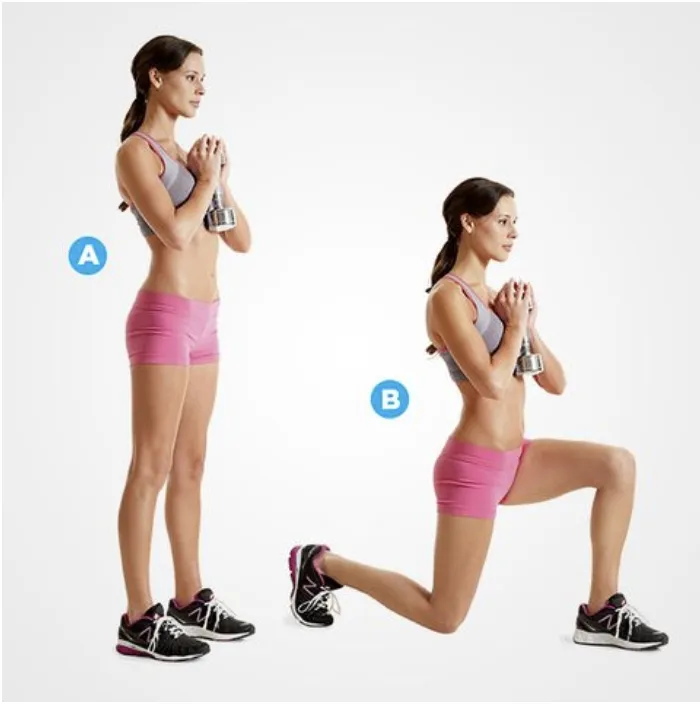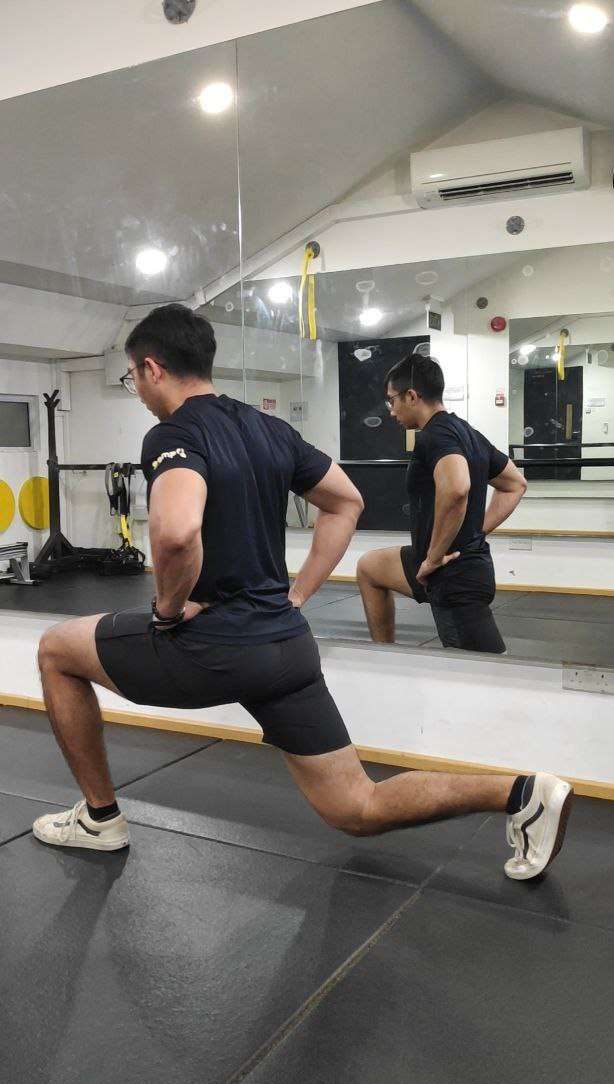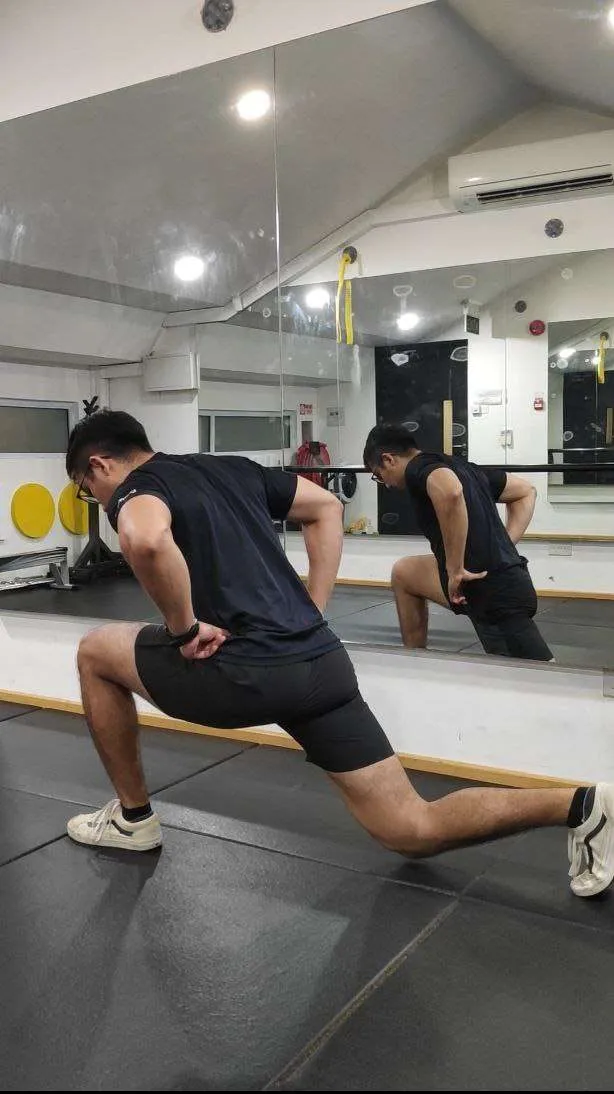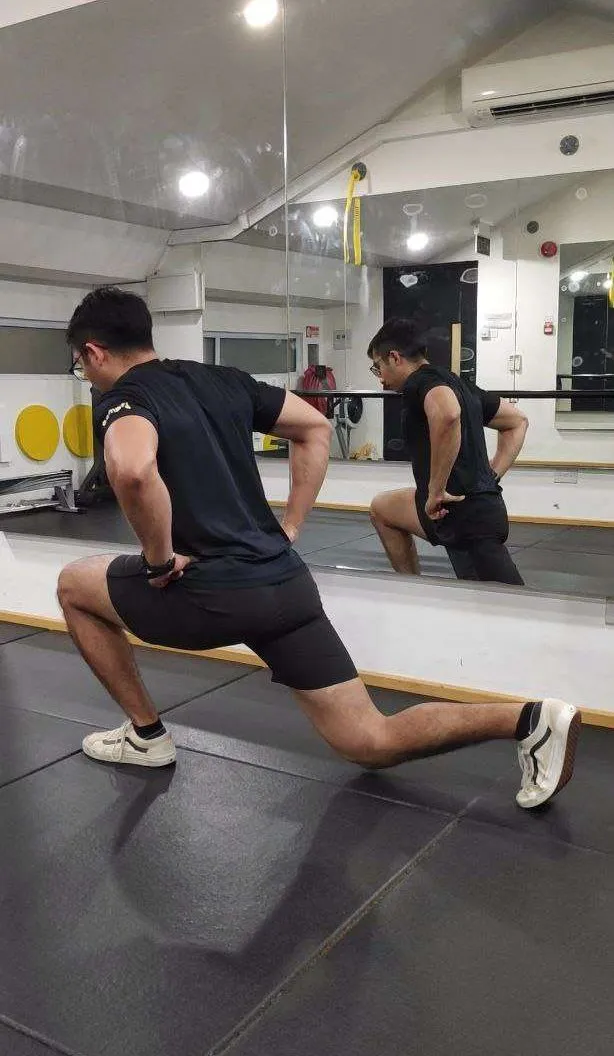Hi Friends of Oompf, it’s Alvan here. Today I will be talking about Reverse Lunges, how to perform it and common mistakes while performing a reverse lunge.

What is a lunge?
The lunge is a compound exercise which hits multiple joints and muscle groups at one go. By taking one big step forward, you work the muscles in your hips, glutes and legs, making them stronger and improving your balance and flexibility.
It’s also a movement that has a carryover effect to a variety of sports, and runners too. It is a definite exercise to include in your workout routine if you want to get faster and more resilient to injury. The functional benefits of the movement will help you out in your day-to-day life as well – like if you need to take a stride forward or backward or even to the side to grab something from the table.
Even better, all these benefits arise from just the standard lunge, and there are plenty of lunge variations to help expand the advantages you can get from the move.
Problem with the forward lunge
If you do them long and hard enough, the lunge exercise will definitely affect you negatively in some way or another. No matter how refined your forward lunge technique is, the actual motion is the factor for joint discomfort, especially in the knees.
The lunge focuses on a hard eccentric thigh contraction on the forward leg to stabilize the foot and ankle, while still staying upright at the hip and trunk. This eccentric loading of the thighs causes a huge amount of strain through the knee cap and other regional structures including the knee ligament.
Furthermore, it’s easy to overstep and get your weight in the wrong position during the forward lunge, thereby causing some form of knee pain after repeatedly non optimal technique execution.
The reverse lunge, however, is performed with less momentum, so the movement is easier to control. Many people don’t have as much control going forward.
That’s why our personal trainers prefer incorporating reverse lunge s in our clients workouts.
Reverse lunge
The reverse lunge is one of the better variations of the lunge exercise everybody should do for various reasons.
While both the forward and reverse lunge do a great job of working your thighs, glutes and calves, the latter has the edge because the forward momentum generated when you drive back up to the starting position more closely mimics the movement of running.
Because the first action of the reverse lunge is a backward step, the front leg maintains stability (via reflex) throughout the hip and knee joints, and does not have to go into an open chain to achieve that position, unlike the forward lunge
Therefore, it is easier to control your movement. If you have any knee pain, reverse lunge may be a better choice.
How to perform a reverse lunge?
1. Start by standing straight and bracing your core.
2. Next, take a comfortable step backwards with your left foot.
3. Bend your right knee until it’s at 90°, and lower your left knee until it is also bent at a right angle
4. Then push back up and return to the starting position.
5. Make sure you keep your torso upright throughout the movement.

Reverse Lunge Variations
It is possible to adjust the front knee and body position to accentuate the work either on the glutes or on the quads.
By leaning forward and keeping a 90° angle in the front knee, you can target the glute muscles more.

On the contrary, if you increase the angle in the front knee, you’ll use quads more. This is good if you are doing reverse lunges as an alternative to squats.

Common Mistakes
A common mistake with the reverse lunge is not bending the back knee enough, which can end up straining your hip flexors.
To avoid this, think about dropping your back knee straight down toward the ground as you step that leg back. Take note the back knee should not be touching the ground. It should be a few inches away.
Another common mistake is stepping too narrowly. People lose their balance with the reverse lunge by trying to step the back leg exactly behind the front leg. Your feet should stay hip-width apart as you step.
Did you find this article useful? Email us your feedback at [email protected].

